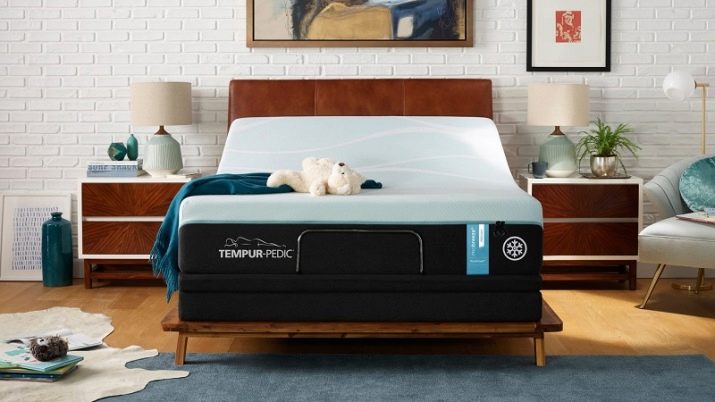Choosing a medium firm mattress
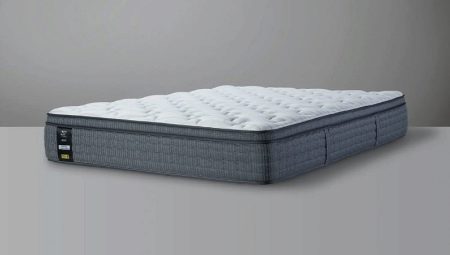
Semi-hard mattresses are the most versatile of these sleeping products.... They are suitable for a wide age group of the population due to their properties. This is, as it were, a borderline degree of firmness, where the elasticity in the mattress is optimal and balanced for the back.
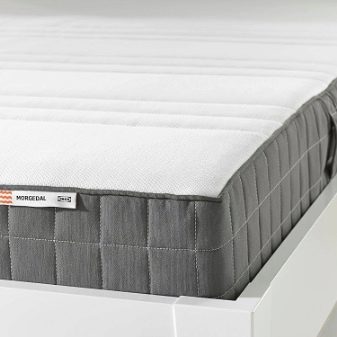
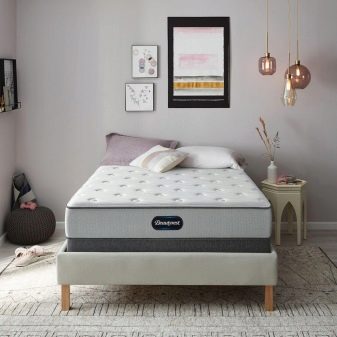
Advantages and disadvantages
Rigidity - assistant for children and adolescents. At the age of 17, the spine is actively developing, and it is the axis of all movements. The main skeleton grows with it. Therefore, the average and high rigidity of products of this category of people will only benefit. For young people under 25 and people of predominantly working age, who monitor their health and support it in all ways, the average hardness is also the minimum and acceptable level of comfort.
The second advantage is that the mattress of medium firmness is universal.... It is made from coir and latex, from independent or interconnected springs. The spring block and independent springs are well combined with different fillers, but they can be deprived of them, with the exception of subsurface packing, without which no frame product can do. It softens the response pressure of the spring block. Due to the availability of certain - or a combination of different - technologies, mattresses of medium hardness vary in price over a wide range. They border on both low-budget and high-end products.
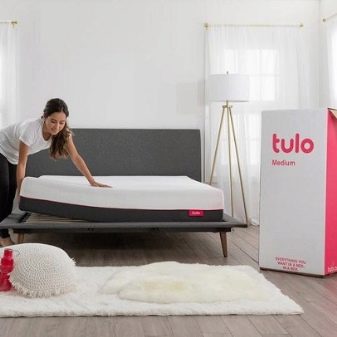

If an elderly person has maintained health and activity, then he can also stretch his back from time to time on mattresses of average hardness. This will give him the opportunity to extend his life and live to a very advanced age. Although general guidelines recommend a soft mattress for a senior citizen, general health may require softness under the lower back and increased rigidity in the thoracic spine. Many semi-hard mattresses are orthopedic products.
disadvantages medium firm mattresses are also available. First of all, they cannot be used by patients who have diseases of the osteo-ligamentous system, curvature of the spine, there are protrusions, hernias and compression insertions that threaten to fracture one of the vertebrae in the absence of proper treatment. Also, semi-hard mattresses, despite their significant elasticity, are not recommended for thin people. The creak of a worn, interconnected spring frame is a reason for a sudden night awakening.
This "age" feature of the mattress is not eliminated - it is easier to purchase a mattress of medium hardness with independent springs or without them at all. Such a model is much more expensive than a spring one.
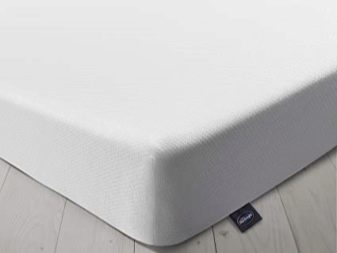

Composition and types
Thin mattresses of medium firmness provide for the complete absence of springs... These are mainly products based on semi-rigid and rigid fillers, such as latex, coir or rubber fibers. Semi-hard mattresses differ in their composition. Springless ones contain, in addition to coir, latex and rubber, polyurethane (sponge or foam rubber), woolen padding. In latex-coconut products, the layers of latex and coconut fiber are arranged so that, according to standard standards, the hardness is medium.
If you do not use latex, then the mattress is considered hard (high degree of hardness). The absence of coconut fiber will make its hardness moderate - below average.... If there is no latex or coir in the mattress, then foam rubber, rubber, wool, cloth, tekhvat and a number of other types and varieties of stuffing allowed in the production of mattress products are used.
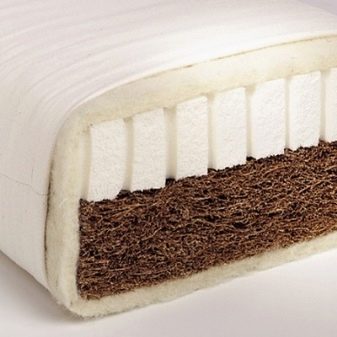
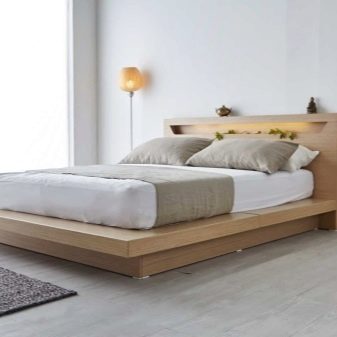
In the design with independent springs, a cover is put on each to save the product itself from the knocking and clanging of steel elements. The stiffness of the springs depends on the thickness of the wire, the location and diameter of the coils. - these characteristics are chosen in such a way that the product will end up with exactly medium hardness. Interlayers of fiberglass and fiberglass were put into products from the times of the USSR, but more often they used second- and third-grade wool, horsehair, textiles of not the best quality.
However, GOSTs for environmental friendliness were fully complied with - most of the spring mattresses did not have foam cushions, or they were used in limited quantities. In the 21st century, mattresses with an independent arrangement of springs have almost completely replaced designs with interconnected elements due to the knock and squeak of the latter. As a secondary (surface) padding, in addition to wool and HB matter, holofiber is used - a synthetic material that retains heat near the body of a lying person, on the surface of the product.

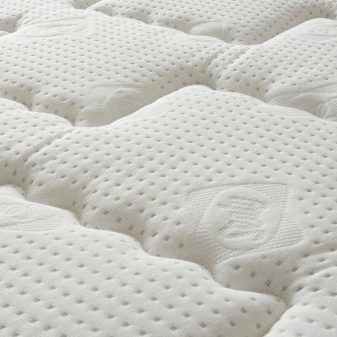
Dimensions (edit)
Double model - a mattress where at least 75 cm is allocated for one person... This allows people to fit in with relative comfort: for a man, the width of the shoulders can reach approximately this value, as well as the size of the pelvis (hips) for a woman. It is on the basis of these data that the model is chosen on which the couple does not feel constrained and cramped. In terms of length, a mattress of 200 cm or more is considered ideal - 99.9% of people are unlikely to be more than 2 m tall.Typical sizes for single items are 180x200, 190x190, 170x200, 170x210, 190x200, 200x210, 200x220 cm and several similar dimensions.
Sizes 160x200, 150x190, 140x200, 140x210, 120x190, 130x200, 135x195 cm and more than a dozen similar are referred to as one-and-a-half, and 90x200, 100x200, 85x195 cm and the like are referred to as single. On one and a half sleeping together, you can fall asleep only "jack", and even then such a dream cannot be called comfortable. Sometimes the dimensions are indicated in millimeters, for example, 2000x2200 - don't be confused by this, since these values can be easily converted into centimeters.
Dimensions with "round" values are indicated in meters, for example, 2x1, even less often values in decimetres are found - for example, 19x21.
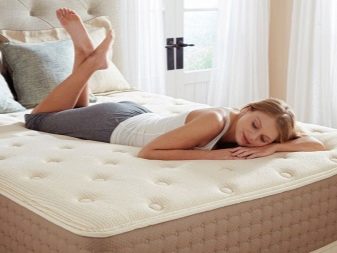
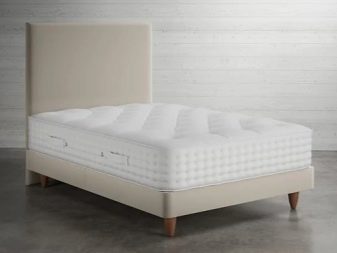
Top Models
To date, the following products are considered the best models.
- Askona Sleep Style Discovery. 550 spring model, synthetic mattress pad, coconut coir and ortofoam.Thickness - 20.5 cm, withstands a load of up to 140 kg.
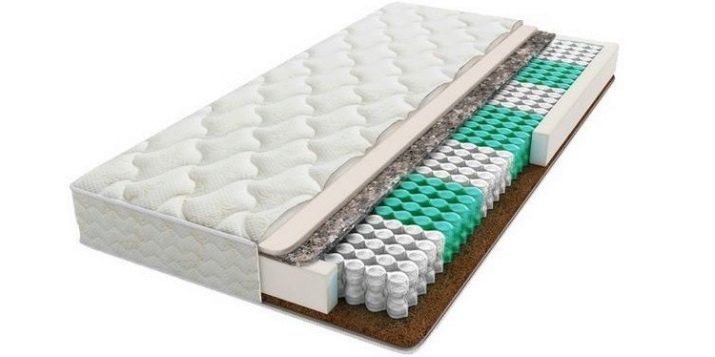
- Askona Fitness Arena - a product with "hourglass" springs, ortofoam and biokos, 23 cm, withstands 140 kg.

- Dreamline Classic Roll Slim - springless jacquard cover, natural padding, 10 cm, holds up to 100 kg.

- Askona cardio - independent spring, five-zone stiffness, ortofoam, "massage", coconut padding, 24 cm, up to 140 kg load.
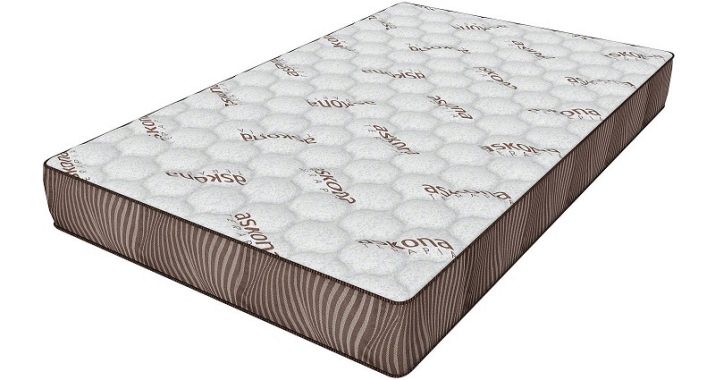
- Askona Comfort Plus... Long lasting. Independent springs, foam filler, can withstand up to 110 kg.

- Dreamline eco strong - interconnected spring, jacquard cover with HB, latex padding, felt, 19 cm, load weight - up to 150 kg.
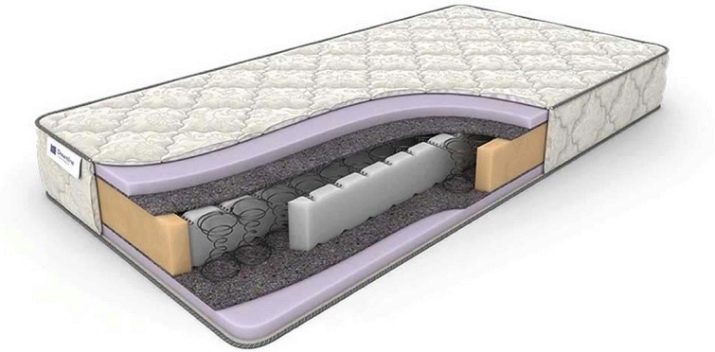
- "Ormatek" Optima Light Bonnell - spring block, jacquard cover, ortofoam, 20 cm, withstands up to 110 kg.
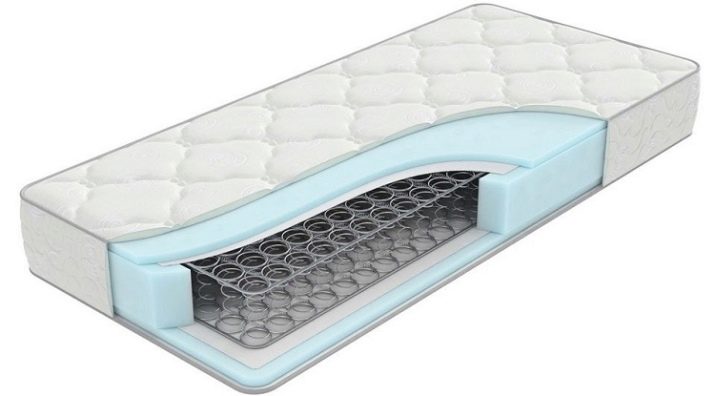
- "Ormatek" Eco Flex without springs, double-sided, ortofoam, 15 cm, holds up to 90 kg.

- Askona Balance Forma - foam-felt padding, 17 cm, withstands up to 110 kg.
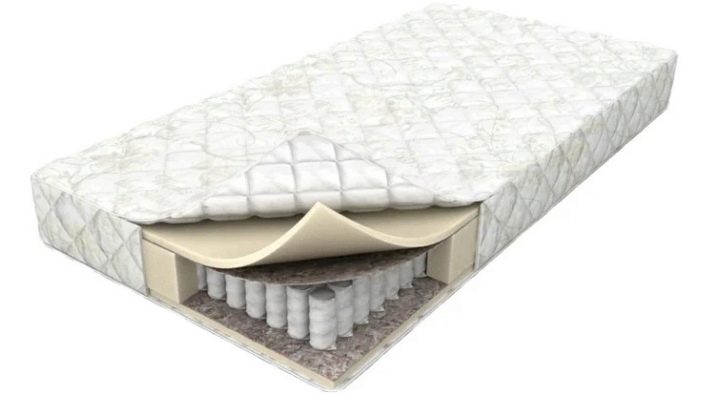
- Dreamline Komfort Massage S1000: independent springs, Ergo Foam with felt padding, 23 cm thick, holds up to 130 kg.
The rating of the best models is based on the results of regular polls.
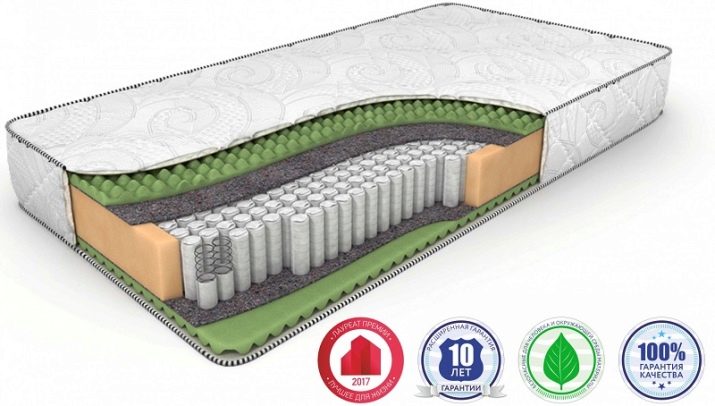
How to choose for sleep?
For a double bed, models with a width of 1.5-2 m are suitable... Lovers and married couples who have a disagreement in their preferences, on which mattress how hard to sleep, prefer mattresses of varying degrees of hardness. It's like two single mattresses in one piece. Here, the soft and hard layers are split in two on the same level. For example, on one half the top layer is coconut fiber, on the other half is latex. This allows the partners to differentiate the stiffness relative to each other.
Mattresses are chosen not only in length and width, but also in height. Typical dimensions for adults are about 14 ... 25 cm thick. The thinner design is mainly suitable for children and adolescents, whose body is rapidly growing and developing - the vertebrae should always be located anatomically even, and a rigid model only contributes to this.

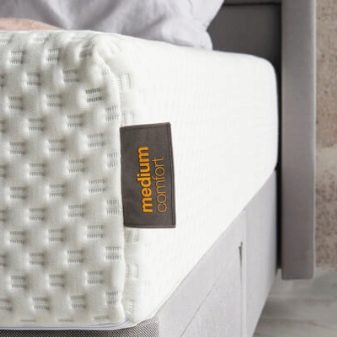
After 25 years, when the entire skeleton is finally formed, the rigidity of the mattress does not play a special role: you can sleep on a semi-hard of any configuration, and on a soft one, and on a very hard one. Of course, these rules work only for generally healthy people, whose osteo-cartilaginous system is in perfect order all their lives. For a number of patients - for one reason or another - a semi-hard mattress may not be suitable.
The price category is also different: when the design does not really matter to the user, he will choose a model that suits him in terms of rigidity. Latex and coconut coir are durable and safe materials. Cheap - polyurethane (foam rubber). In terms of the severity of the structure, all types of mattresses are superior to the models with springs. Independent springs are somewhat lighter than interconnected ones due to the absence of external steel frames and strapping, thanks to which the mattress structure does not allow individual springs to be forced through unnecessarily, taking on a part of the point load.
Finally, if design is important to you, then from the semi-hard mattresses, choose the one on which it is pleasant for you to lie purely aesthetically. This helps you to relax faster and fall asleep earlier.
